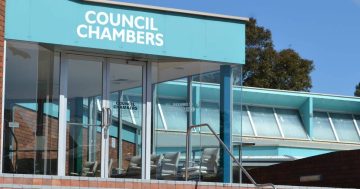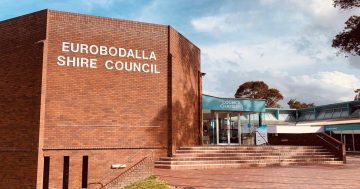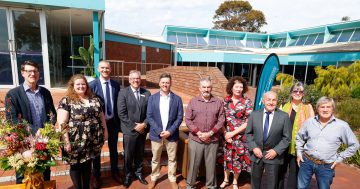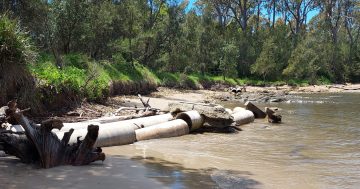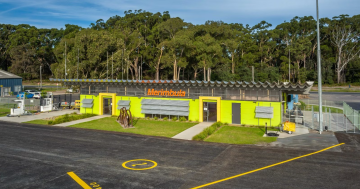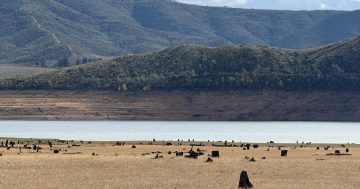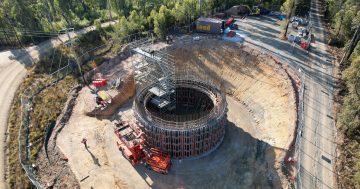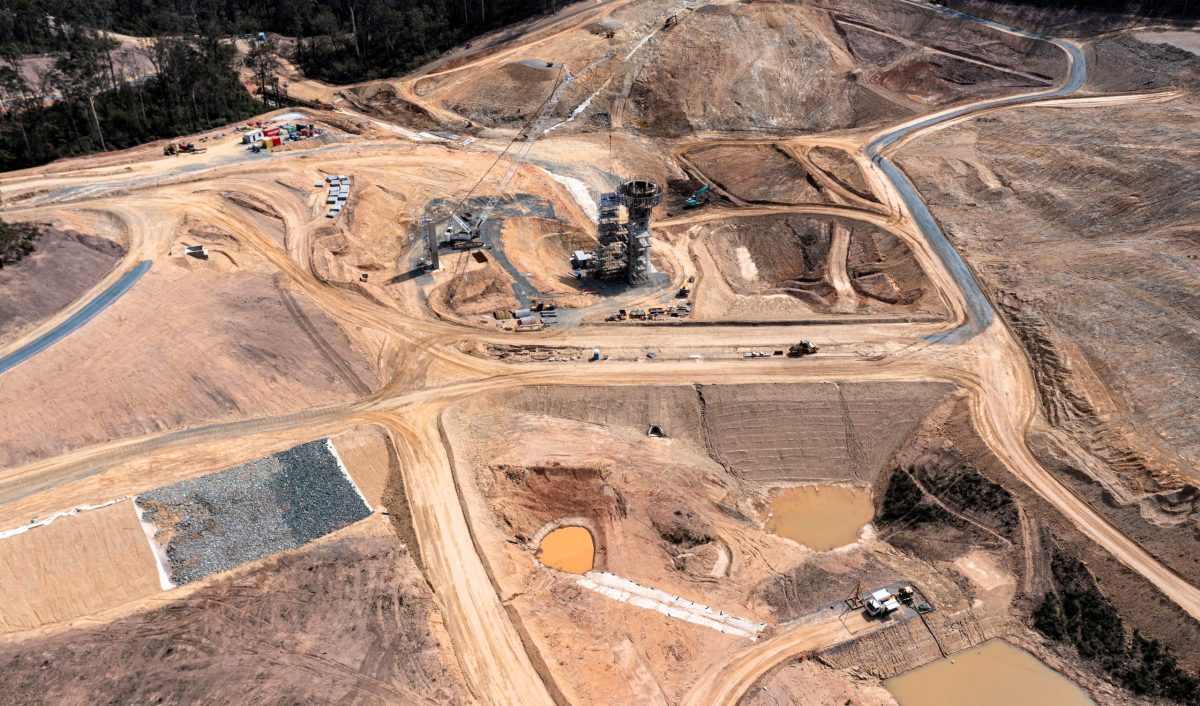
A drone shot of work on the Eurobodalla Southern Water Supply Storage project. Photo: Eurobodalla Shire Council.
It has been a perfect storm for organisations undertaking major infrastructure projects and Eurobodalla Shire Council’s Eurobodalla Southern Water Supply Storage is no exception.
The estimated cost for the 3000-megalitre water storage dam was $106.7 million in December 2018. The agenda papers for the council’s July meeting revealed the cost to be at least $150 million “not accounting for a potential increase in biodiversity offsets”.
The council is on the hook for the blow-out in costs after the NSW Government committed $25.6 million to the project in 2019 and the Australian Government committed $51.2 million in May 2021.
The council received four formal tenders in April 2022. All tendered prices exceeded the tender estimate significantly. The contract awarded to Haslin Constructions in June 2022 was $25.1 million higher.
The construction cost increases from the December 2018 pre-tender estimate were attributed to COVID causing supply issues and labour shortages; the Black Summer bushfires and subsequent floods leading to resource competition; low unemployment and; finally, the Ukraine War pushing up fuel and material costs.
It lifted the council’s contribution to the project by at least $25 million from $27.2 million to $52.2 million. Modelling in 2018 had determined that the council could afford to contribute $52 million without increasing water rates.
It is a familiar story as several large Bushfire Local Economic Recovery Fund (BLERF) projects, including the Narooma Arts Centre, the Cobargo Bushfire Resilience Centre and the rebuilding of Cobargo’s CBD could attest.
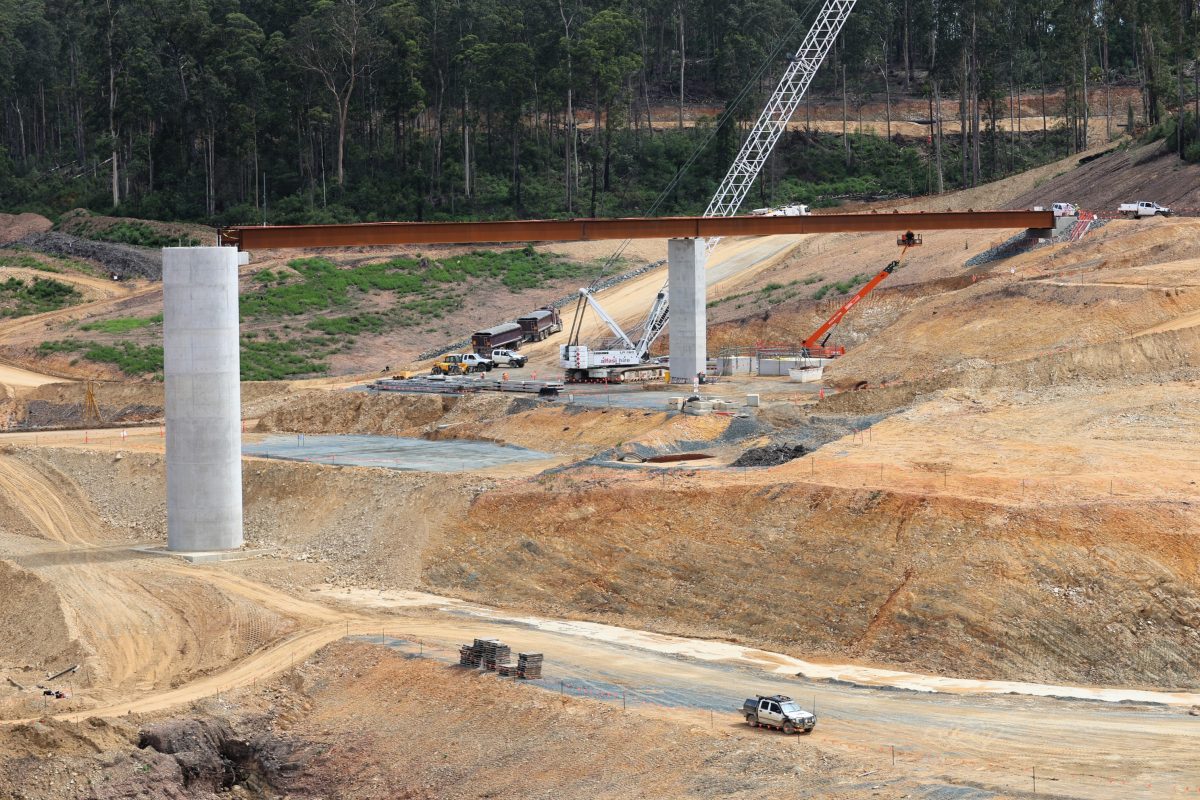
The Southern Dam tower. Photo: Eurobodalla Shire Council.
Additionally, “significant geotechnical issues” have been encountered at the site of the off-river water storage dam next to the Tuross River, predominantly in Bodalla State Forest. These led to higher project management, consultant and construction costs. The issues have also led to project delivery being delayed from March 2024 to early 2025.
The NSW Government’s biodiversity offsets scheme is another spanner in the works. The council used the Office of the Environment’s (OEH) calculator and estimated it would cost $3.5 million to offset the environmental impacts of the project. It conservatively budgeted for $9 million.
Since then responsibility for estimating biodiversity offsets transferred from OEH to the Biodiversity Conservation Fund. In late 2023 the council requested a quote to purchase the biodiversity credits. It received a quote of $30.9 million (excluding GST), $20.9 million more than budgeted and $27.5 million above the initial estimate.
The council meeting papers said council had “written to the Minister for Water and the Minister for the Environment seeking a solution which will not impact the final project costs nor potentially increase water rates”.
Another potential unknown cost is that the Forestry Land is the subject of a Native Title claim. As some of the land was previously privately owned, council is seeking legal advice on whether that private ownership extinguished Native Title.
The council had notified the Native Title claimants of the project and need to acquire the land in 2023. The Native Title process before the Federal Court could take another five years or more. The council will have to pay compensation if the Native Title claim is approved.
After the council has clarified its exposure to the Native Title claim it will decide how to progress the acquisition including further negotiation with the Native Title claimants. An agreement with the claimants will be required to finalise the land acquisition.
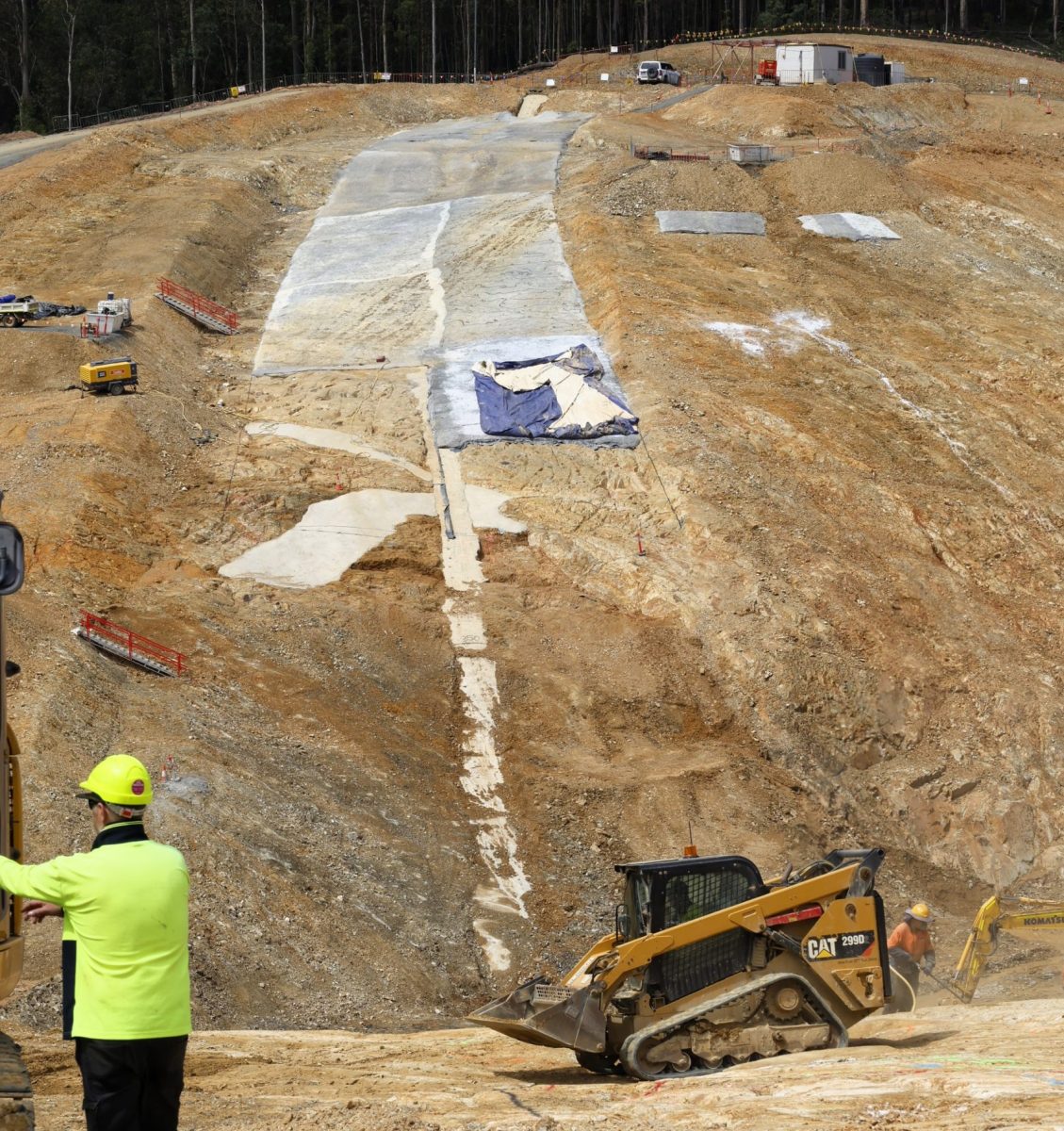
Work in progress at the Eurobodalla Southern Water Supply Storage. Photo: Eurobodalla Shire Council.
Region put some questions about the project to the council.
The council said it was working with the designer SMEC, builder and NSW Public Works to minimise risk and cost, including modification to the design and construction of the embankment.
It said its request for additional funding from the Australian Government was unsuccessful.
Council was unable to give dates when either the cost of the biodiversity offsets or final project cost would be known.
The new dam is essential to drought-proof the shire. The council’s current storage capacity is 4900 megalitres, about 16 months of current average annual unrestricted demand of 3700 megalitres. With the 2008-2010 and 2017-2019 droughts each lasting two years “the community couldn’t endure a comparable drought without severe water restrictions or potentially running out of water”. Longer term, the council’s Integrated Water Cycle Management Strategy identified the need for 8000 megalitres of water storage by 2070.
The council said, “At this stage of construction, there is no risk of the project not going forward or being completed. The council has already considered downsizing the project to make it less expensive, but the savings were not significant enough to warrant changing the design.”
In the July meeting’s agenda it said given the forecast increase in project costs, the council’s contribution would inevitably increase with either a need to increase debt and/or increase water rates. That forecasting is underway and will be reported to the council and its Audit, Risk and Improvement Committee in due course.







